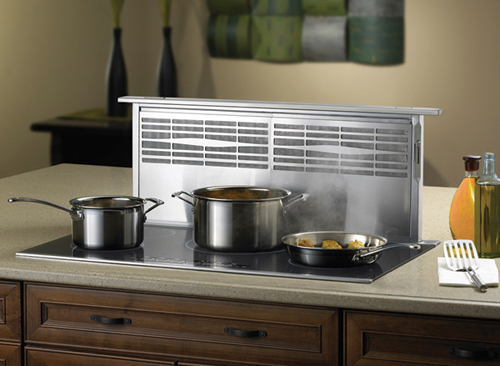Innovations in Smart, Universal, Energy-efficient and Water-saving Home Appliances
The Kitchen: Energy-efficient Meals
Cool induction cooktops
For the greenest cooks, the induction cooktop may be the best solution for safe, effective cooking. An alternating current is sent through wires in a smooth glass cooktop to create a magnetic field. This current transfers electromagnetic waves directly to iron or steel pans that can heat food with lightning-fast speed. Learning to cook on an induction cooktop may take some adjustments, but the 90 percent energy rating by the EPA may well provide the incentive for the switch. According to the U.S. Department of Energy, the efficiency of energy transfer for an induction cooktop is 90percent, versus 71 percent for a smooth-top non-induction electrical unit, an approximate 20 percent saving in energy for the same amount of heat transfer. According to the new "U. S. Green Building Green Home Guide," induction cooktops are a safe and reliable alternative to natural gas and one that does not reduce indoor air quality.7 These cooktops can be placed at counter height above a ten inch cabinet frame, leaving space for either wheelchair access or kitchen storage below its surface.
The National Green Building Standardâ„¢, ICC700-2008, is the first national standard or program to recognize the energy efficiency of induction cooktops.
Duct-free downdraft cooktops
Duct-free downdraft cooktops will "open up a whole new world of possibilities in cooking and kitchen design for millions of consumers," notes Juliet Johnson, manager of brand experience for Jenn-Air. "Anyone whose ventilation limitations have made them anxious about frying, searing and other high-smoke cooking can breathe a sigh of relief and clear, smoke-free air." Self-ventilated cooktops have been on the market since the 1960's designed to free the kitchen area from adjacency to exterior walls. Early designs used fans to draw steam and grease down from the cooktop to ducts in the floor or an adjacent cabinet. These new downdraft systems use powerful filters and they are designed with easy-to-clean shallow downdraft chambers. They operate with both gas and electric cooking surfaces. They are quieter than earlier models and maintain good air quality in the kitchen. Today's premium downdraft cooktops use 425-475 CFM to exhaust air. Most overhead hoods use 600-1200 CFM. The location of downdraft ventilation at the cooking surface results in greater air velocity at the source to move the air and less CFM to exhaust the air.
The latest technology combines downdraft cooktops with duct-free ventilation kits. These kits fit neatly below the cooktop in the base cabinet and still leave room for storage of pots. The industry's first duct free kit filters air via a HAPA (High Airflow Particulate Air filter) which removes as many particles as a traditional HEPA filter without the restriction to airflow. This allows the air to maintain the velocity needed for effective ventilation: moisture evaporates, smoke and other odor-carrying particles are trapped in the filter, and cleaner, fresher air is returned to the kitchen. An indicator light alerts users when it is time to change the filter. Typically it is changed every six months to one year, but is dependent on cooking frequency. This new system allows duct-free performance as effective as ducted ventilation.
 |
Induction cooktop with downdraft ventilation provides efficient and cool-to-the-touch cooking surfaces. Photo: Jenn-Air® |









